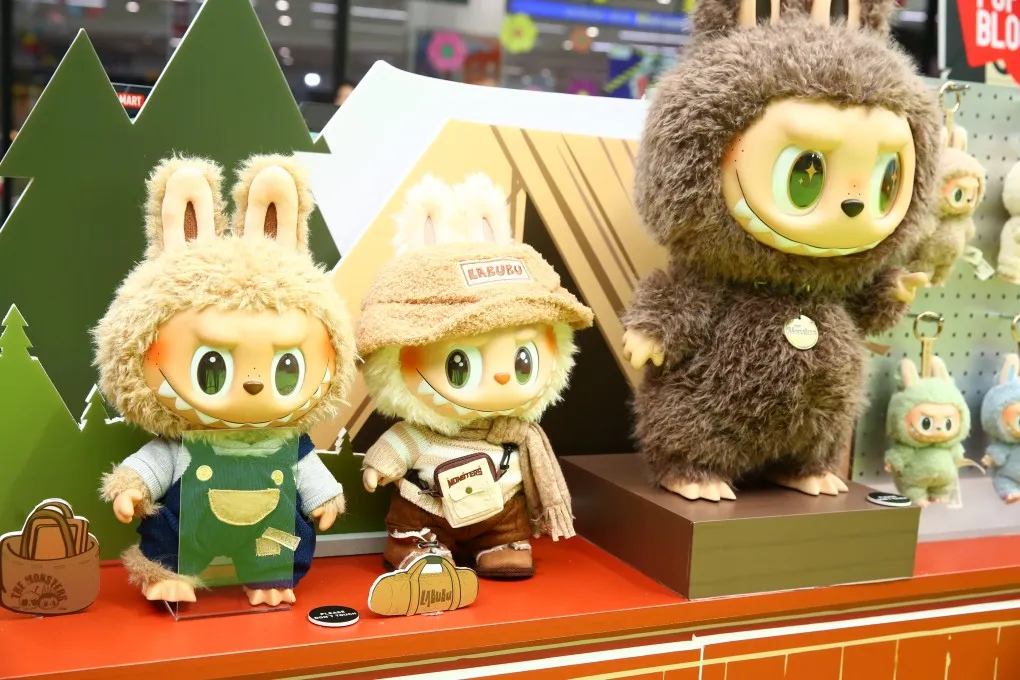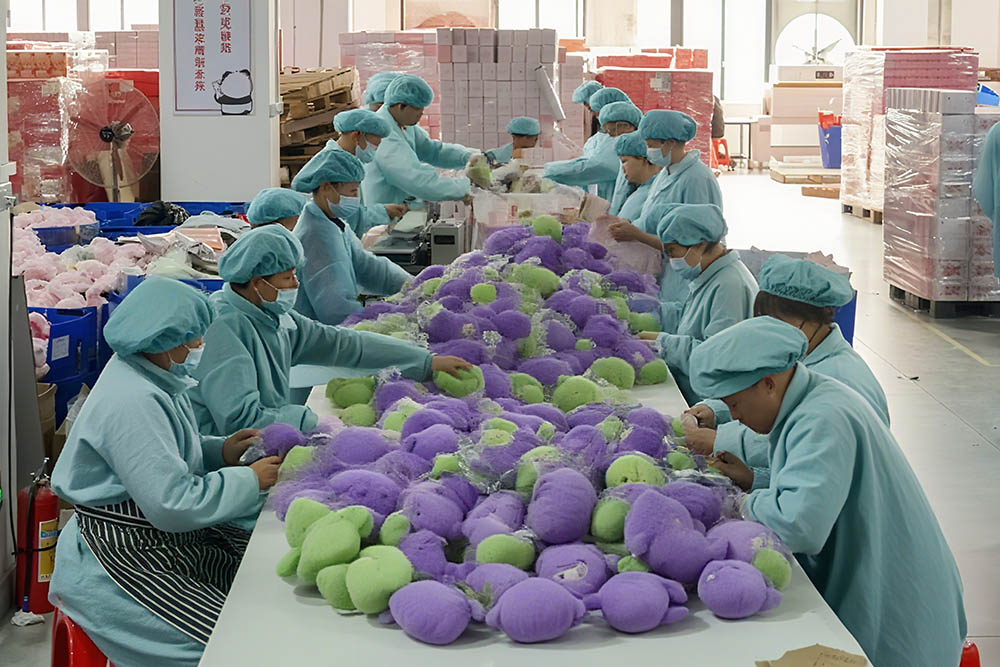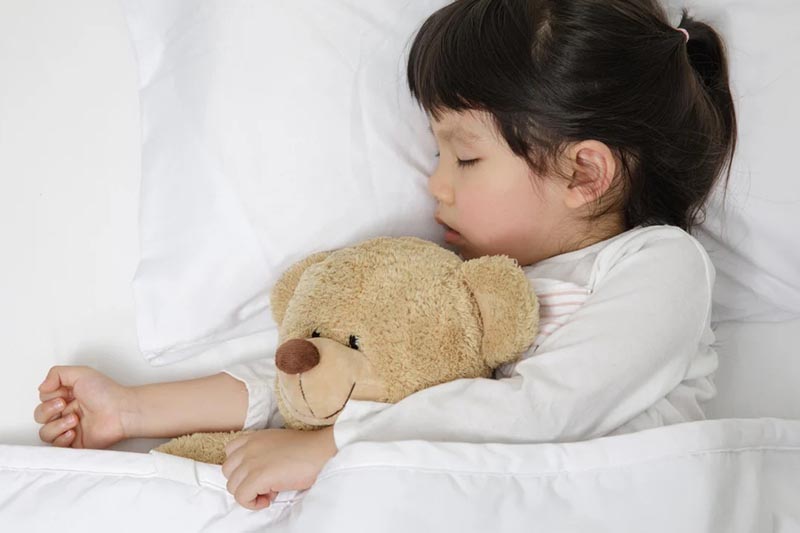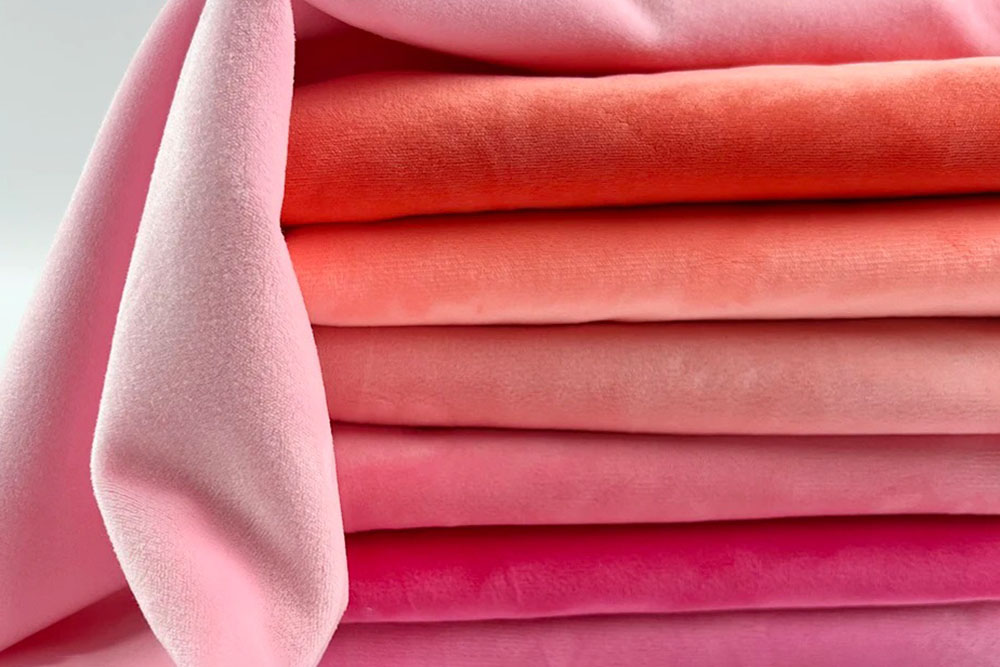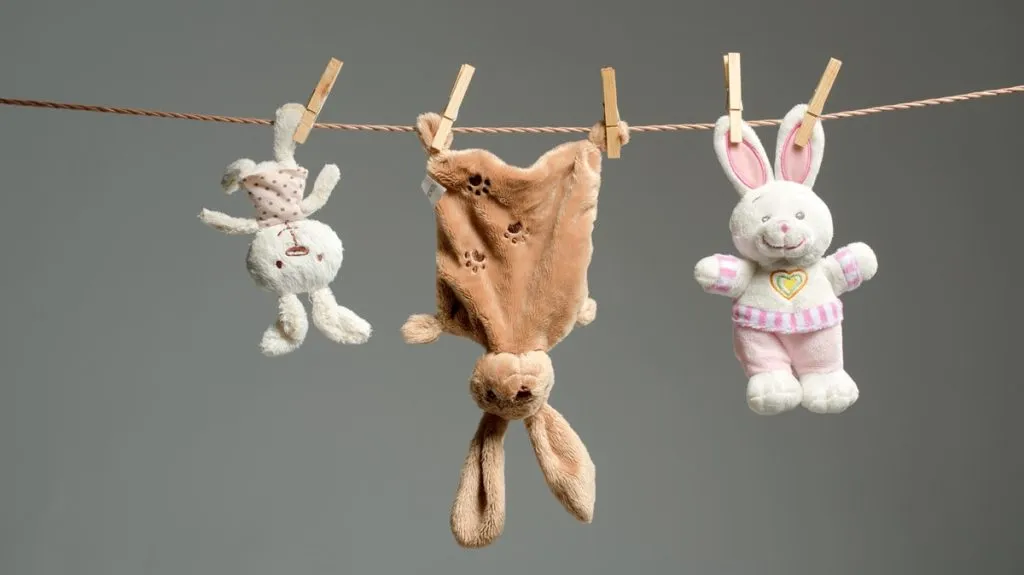Stuffed animals are loved worldwide for comfort, play, and brand value. But what makes them soft, durable, and safe largely depends on the stuffing inside. Choosing the right filling is not only about cost but also about safety standards, customer satisfaction, and market positioning.
This guide explores the most common stuffing materials used in plush toys today, their advantages, limitations, and suitability for different applications.
1. Polyester Fiberfill

Polyester fiberfill is the most widely used stuffing for stuffed animals because it is affordable, safe, and easy to maintain. It is made from synthetic polyester fibers that are lightweight, fluffy, and resistant to moisture. For factories and retailers, fiberfill is the go-to choice for balancing cost efficiency with customer expectations. Parents and buyers appreciate that polyester fiberfill dries quickly after washing, making it ideal for toys that need frequent cleaning.
This material also offers versatility. Manufacturers can adjust the density of the fiberfill to achieve different firmness levels, from ultra-soft plush toys for babies to firmer stuffed animals for decorative or promotional use. It is hypoallergenic, which makes it safe for children, and it resists clumping better than many natural fillings. However, since it is a synthetic material, it is not biodegradable, which can be a concern for eco-conscious buyers.
Despite that limitation, polyester fiberfill remains the industry standard because it delivers consistent quality at scale. It supports high-volume production, keeps toys lightweight for shipping, and offers long-lasting shape retention. Many global buyers prefer it for mainstream retail and promotional markets, where affordability, safety, and durability matter most.
| Feature | Benefit for Plush Toys |
| Lightweight & fluffy | Keeps toys soft and huggable |
| Washable | Easy for parents to clean and maintain |
| Hypoallergenic | Safe for babies and children |
| Cost-effective | Ideal for mass production and retail |
2. Microfiber Filling

Microfiber filling is softer and finer than traditional polyester fiberfill, giving stuffed animals an ultra-smooth and luxurious texture. It is made from very thin synthetic fibers that feel like silk, making it a premium option often used for collectible plushies, gift items, or baby products. Buyers looking for higher-end toys often choose microfiber because it enhances tactile appeal and provides a unique selling point.
This filling conforms better to shapes compared to regular fiberfill, which helps toys maintain a smoother appearance. It is also lightweight, breathable, and retains softness over time. For parents, microfiber toys feel exceptionally gentle on children’s skin, reducing irritation risks. However, the cost is higher than standard fiberfill, and it may require stricter stitching to prevent fibers from leaking.
For manufacturers, microfiber filling is less about cost efficiency and more about premium positioning. It works best in limited-edition toys, luxury plush dolls, and promotional gifts where brand image is critical. Retailers that want to differentiate from mass-market products often use microfiber-filled plushies to justify higher pricing.
| Feature | Benefit for Plush Toys |
| Ultra-soft texture | Premium feel for luxury or baby toys |
| Shape-conforming | Smooth finish and better appearance |
| Gentle on skin | Safe and comfortable for children |
| Higher cost | Best for premium markets and collectibles |
3. Memory Foam and Foam Particles

Memory foam and foam particles are less common but highly valued for specific markets. Memory foam provides excellent shape retention and creates a firmer, supportive feel. Foam particles, on the other hand, are lightweight beads of foam that allow for more flexibility and squishiness. These materials are often used in novelty plush toys, cushions, and therapeutic products.
Memory foam offers durability and resilience, making it suitable for specialty plush that require structure, such as neck pillows or plush toys that double as cushions. Foam particles provide a playful “bean bag” effect that appeals to both children and adults. However, both materials require strong inner lining and stitching to prevent leaks, and they are not always machine washable.
For B2B buyers, these fillings are ideal for brands looking to combine function with fun. Plush products using foam can target travel accessories, stress-relief toys, or adult collectibles. They are more niche but can offer higher margins if positioned correctly in the market.
| Feature | Benefit for Plush Toys |
| Memory foam | Supportive, keeps shape well |
| Foam particles | Squishy and flexible feel |
| Special market appeal | Great for cushions, travel, novelty toys |
| Requires strong stitching | Prevents leaks and ensures durability |
4. Plastic Pellets and Beads

Plastic pellets and beads are often used as partial fillings, either on their own or combined with fiberfill. They add weight and stability to plush toys, giving them a more realistic feel. Commonly found in bean bag toys or plush animals with weighted limbs, pellets improve balance and make toys sit upright.
The main advantage is tactile engagement—customers enjoy the added texture and realistic heaviness. For therapeutic or sensory toys, weighted beads are particularly valuable as they provide comfort and stress relief. However, safety is a key concern: pellets must always be enclosed in secure inner pouches and paired with reinforced stitching to prevent choking risks.
For manufacturers, pellets offer flexibility in design. They allow differentiation between plush products and help create lines targeting sensory play, collectibles, or adult markets. From a sourcing perspective, pellets are inexpensive but require careful compliance with safety standards.
| Feature | Benefit for Plush Toys |
| Adds weight | More realistic feel and balance |
| Sensory engagement | Useful for stress-relief and therapy toys |
| Versatile use | Works alone or combined with fiberfill |
| Safety considerations | Needs secure pouches and reinforced seams |
5. Cotton and Organic Cotton

Cotton, especially organic cotton, is highly valued for natural and eco-friendly stuffed animals. Unlike synthetic options, cotton is biodegradable, breathable, and safe for sensitive skin. Organic cotton, in particular, appeals to buyers seeking sustainable products and parents concerned about chemical exposure.
This material creates a firmer feel compared to polyester fiberfill, making it ideal for traditional plush dolls or decorative stuffed animals. Organic cotton fillings are often paired with organic cotton fabrics, offering a fully natural product. However, cotton is heavier, more expensive, and less resilient to washing compared to synthetic fibers. It also tends to clump if not carefully processed.
For premium or eco-conscious markets, cotton is an excellent differentiator. Retailers targeting baby products, organic brands, or sustainable gift markets benefit from highlighting cotton filling as part of their marketing strategy.
| Feature | Benefit for Plush Toys |
| Natural & breathable | Safe for sensitive skin |
| Biodegradable | Eco-friendly and sustainable |
| Firmer feel | Great for dolls and decorative toys |
| Higher cost | Appeals to premium and eco markets |
6. Wool

Wool stuffing is less common but provides unique benefits. It is natural, renewable, and offers excellent insulation. Wool-stuffed toys feel firm yet soft, and the material has natural antibacterial properties, which help maintain hygiene. It is popular in handmade or artisanal plush toys.
Wool also offers temperature regulation, keeping toys comfortable in different climates. For buyers, wool brings a “natural luxury” appeal that resonates with eco-conscious customers. However, it is more expensive than polyester or cotton, and not always machine washable. It may also trigger allergies in sensitive users, which limits its use for baby products.
From a sourcing standpoint, wool is more suitable for boutique or niche markets, rather than mass production. Retailers focusing on artisanal craftsmanship, handmade collections, or luxury gifts often use wool to stand out in competitive markets.
| Feature | Benefit for Plush Toys |
| Natural & renewable | Sustainable material for eco brands |
| Antibacterial | Helps maintain hygiene |
| Temperature regulation | Keeps plush comfortable year-round |
| Higher cost & niche use | Best for handmade or premium plush lines |
7. Recycled Polyester Fiber (RPET)

Recycled polyester fiber (RPET) is becoming a leading choice in the plush industry as sustainability gains importance. It is made from recycled PET bottles, which are cleaned, processed, and spun into fiberfill. RPET offers the same softness and durability as traditional polyester, but with a much smaller environmental footprint.
This material helps brands meet eco-certification requirements and appeal to environmentally conscious consumers. For manufacturers, RPET provides a balance between sustainability and scalability. It is washable, hypoallergenic, and lightweight, making it suitable for mainstream retail while also boosting brand reputation.
The challenge is cost and supply chain consistency, as RPET can be more expensive and harder to source in some regions. Still, global buyers are increasingly prioritizing RPET, especially for export markets like Europe and North America where eco-compliance is essential.
| Feature | Benefit for Plush Toys |
| Eco-friendly | Made from recycled PET bottles |
| Same quality as polyester | Soft, durable, and washable |
| Market appeal | Strong selling point for eco-conscious buyers |
| Higher sourcing cost | Best for premium or certified markets |
Choosing the right stuffing for stuffed animals depends on market goals, safety standards, and customer expectations. From affordable polyester fiberfill to eco-friendly RPET, each material offers unique benefits.
| Stuffing Type | Key Advantage | Best Market Use |
| Polyester Fiberfill | Affordable, washable | Mass retail, promotions |
| Microfiber Filling | Ultra-soft, premium feel | Luxury plush, gifts |
| Memory Foam/Particles | Durable, unique textures | Travel, novelty, collectibles |
| Plastic Pellets | Weighted, sensory engagement | Therapy toys, bean bags |
| Cotton/Organic Cotton | Natural, eco-friendly | Baby toys, premium markets |
| Wool | Antibacterial, artisanal look | Handmade, boutique plush |
| RPET | Sustainable, eco-certified | Export, eco-conscious retail |
At Kinwin, we help global buyers select the best stuffing based on market, safety, and budget needs. Contact us at [email protected] or visit kinwintoys.com to start customizing your plush toys today.



